
India on Wheat Revolution
A commemorative postage stamp on the Indian Green Revolution 1968, led by its main architect M.S. Swaminathan who received Bharat Ratna in 2024 :
 Issued by India
Issued by India
Issued on Jul 17, 1968
Issued for : The Posts and Telegraphs Department is happy to bring out a special postage stamp to commemorate the “Wheat Revolution” and its significance to our agricultural revolution and economic well-being.
Description of Design : The design of the stamp is horizontal and depicts stalks of wheat, the Indian Agricultural Research Institute, New Delhi in the background and the histogram showing the growth in the production of wheat in respect of the years 1951 and 1968.
Type : Stamp, Mint Condition
Colour : Monastral Green and Chestnut
Denomination : 20 Paise
Overall Size : 3.91 X 2.90 cms.
Printing Size : 3.56 X 2.54 cms.
Perforation : 13 x 13
Watermark : Printed on unwatermarked paper
Number Printed : 20,00,000
Number per issue Sheet : 35
Printing Process : Photogravure
Printers : India Security Press. The stamp design is adapted from the design prepared by the artist of I.C.A.R., New Delhi.
About :
- Wheat has been grown in India since ancient times and the wheat grains discovered in the Mohenjo-daro excavations belong to a unique species called Triticum spaerococcum. At present, there are nearly 14 million hectares under this crop, out of which about 4 million are irrigated. Most of the area is under the bread wheat Triticum aestivum but over a million hectares in Madhya Pradesh, Maharashtra and Mysore are under the macaroni wheat, Triticum durum and some area in the Nilgiris Palani hills in Madras State is under Triticum dicoccum. While wheat cultivation in our country is thus one of great antiquity, the yield per hectare has remained below 800 kgs. for a long time. Consequently, the gap between demand and supply has grown and the shortfall has been largely met through import from the United States under the PL 480 programme. A principal reason for the low yields obtained even in irrigated areas is the tall straw of the older varieties which makes the cultivation of the crop under good conditions of soil fertility and water management difficult.
- In order to overcome the barriers to high yields, the Indian Agricultural Research Institute, New Delhi, introduced from Mexico in 1963 a wide range of wheat material possessing the genetic factors for dwarfing originally discovered in the “Norin” Japanese wheats, through the kind courtesy of the Rocke-feller Foundation and the Mexican Ministry of Agriculture. These varieties were tested during 1963-64 and 1964-65 under the All India Coordinated Wheat trials sponsored by the Indian Council of Agricultural Research and carried out in collaboration with the Agricultural Universities and State Departments of Agriculture. Two of them, Lerma Rojo and Sonora 64 were found to do well and yield about 6 tonnes per hectare in many areas. In order to increase wheat production as speedily as possible, the Government of India imported from Mexico 250 tonnes of seeds of these varieties in 1965 and 18,000 tonnes in 1966. As a result, nearly 400,000 hectares were under the dwarf, fertilizer-responsive varieties during 1966-67 and they were grown in about 2 million hectares during 1967-68. There is no parallel in the world for such speed in the practical exploitation of a significant research finding.
- India produced 6.8 million tonnes of wheat at the beginning of the First Plan in 1951. The production during this year (1967-68) is estimated to be about 16 million tonnes. The inter-action between Farmer, Nature and Science has led to this revolution. New dwarf Wheat varieties like Kalyansona, Sharbati Sonora, Sonalika, Safed Lerma and Chhoti Lerma were made available by our scientists during 1967. Many more outstanding varieties both for irrigated and unirrigated wheat areas are in the breeders’ assembly line. The Wheat revolution may thus envelop the entire irrigated area and a part of the unirrigated area during the next season. What is even more significant, the dwarf wheats are not only helping to increase the yield of wheat but are also acting as catalysts in bringing about a total transformation in the outlook and agronomic methodology of our rural community, thus ending the divorce between labour and intellect.


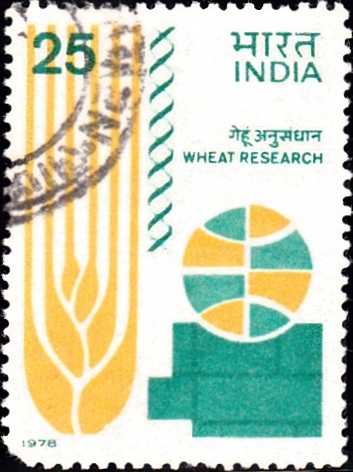

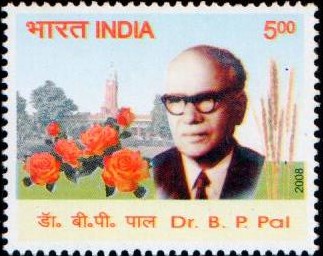
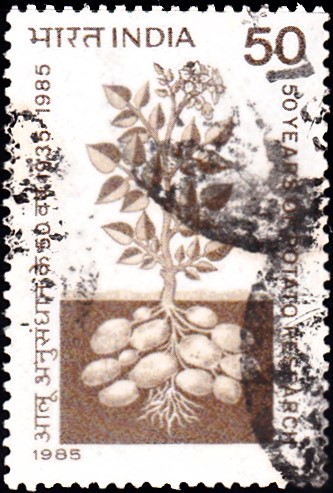
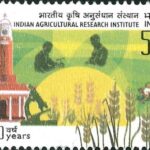
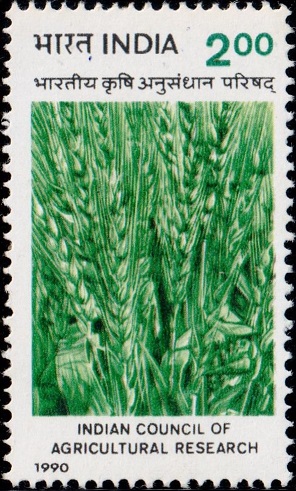
[…] phenomenal progress on food front is characterised by many landmarks. ‘Green Revolution’ was brought about by the high-yielding crop varieties in the early sixties. ‘Blue’ and […]
[…] has made tremendous strides to redeem these pledges. The achievements have been monumental; the Green Revolution has ushered in an era of freedom from hunger. The country has built a strong industrial base, […]
[…] security of the country. Its contribution to the nation goes back to 1968 when India introduced the Green Revolution to stop dependency of food on other countries and herald an era of self-sufficiency in food grains. […]
[…] Wheat Revolution in recent years in India started with breeding of high yielding varieties and has resulted in […]
[…] acclaimed book “Light of India“. Mexico made a valuable contribution to India‘s Green revolution with path breaking research and the famed “Sonora” wheat seed coming from Mexico to […]
[…] Institute has been the harbinger of the Green Revolution and the flagship of Indian agriculture. The increased food production through the application of […]